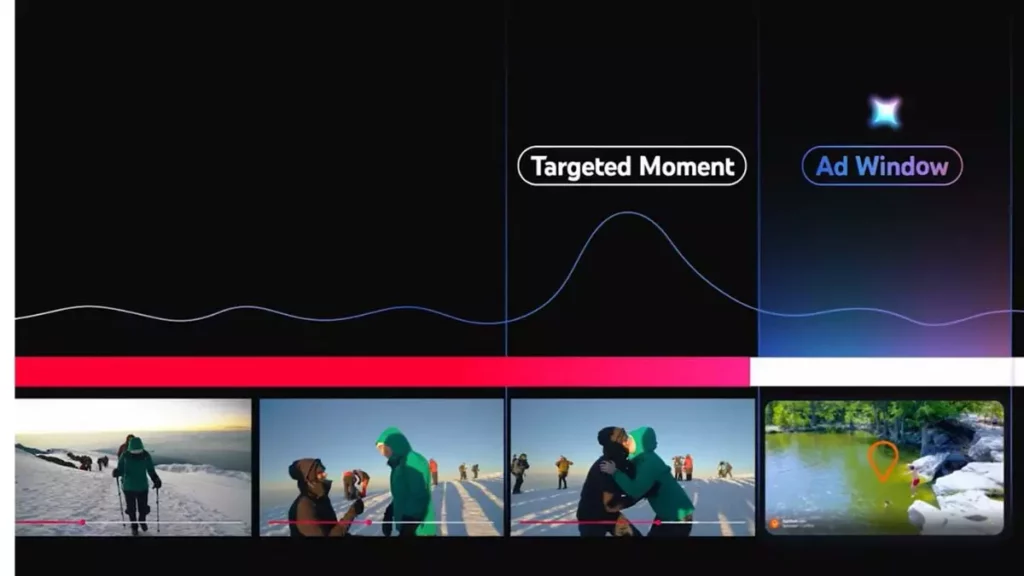YouTube’s newest initiative, Peak Points, unveiled at the Brandcast event in New York, aims to reshape the advertising landscape on the platform. By utilizing the cutting-edge Gemini AI system, this feature promises to pinpoint the most engaging moments within videos for ad placements. While the intention behind this move is clear—improve advertising efficiency—it raises profound concerns that often seem to be overlooked in corporate decision-making. It’s essential to delve into how this approach may change viewer experiences and compromise the integrity of the content creators who populate YouTube’s diverse ecosystem.
How Peak Points Operate: The Mechanics Behind the AI
At its core, Peak Points leverages complex analytics, employing frame-by-frame analysis alongside video transcripts to determine when viewers are most captivated by content. YouTube’s rationale is straightforward: by embedding ads into these “peak” moments—perhaps during a gripping narrative twist or a heart-stopping cliffhanger—advertisements could potentially garner greater viewer attention. However, this strategy runs the risk of commodifying emotional investment. It poses a challenging dilemma: will the sanctity of storytelling be sacrificed on the altar of ad revenue?
Advertising, after all, has always been a double-edged sword; without it, creators can’t monetize their work, yet intrusive ads can drive viewers away. The Peak Points initiative fumbles through an ethical tightrope, constantly balancing revenue generation against maintaining an authentic viewer experience. One can’t help but wonder if YouTube is prioritizing profits over the genuine connections viewers develop with the videos they watch.
Interrupting Key Moments: The Viewer’s Emotional Journey at Risk
Imagine watching a poignant moment in a film or an emotional scene in a beloved YouTube series, only to be interrupted by an ad for a product you never knew existed. These interruptions could disrupt the emotional flow, alienating audiences who seek comfort or connection through storytelling. YouTube’s relentless push for ad revenue via Peak Points might alienate the very people that fuel the platform’s success—viewers.
The question remains: will audiences tolerate their emotional journeys being interrupted? For many, the beauty of video content lies in its ability to transport us, to create a sense of immersion. Introducing ads at climactic intervals can shatter that illusion, leaving viewers in a state of confusion or irritation. In the end, one might feel more like a target for marketing than a cherished audience member.
Content Creators: Caught in the Crossfire
The implications of Peak Points extend beyond viewers; content creators are also walking a precarious line. As ad placements gain visibility, creators fear that the viewing experience will degrade, ultimately resulting in diminished audience engagement. Many YouTube creators rely on organic connection and storytelling to build their audience. When disruptive ads interrupt these narratives, the creator’s voice may become overshadowed, leading to a potential exodus of loyal viewers.
Additionally, creators may find themselves at a disadvantage if they aren’t consulted on ad placements that could affect their content’s integrity. The partnership between YouTube and its creators should be symbiotic, not adversarial. If Peak Points isolates creators from their audience’s experience, it could spell disaster for the very community YouTube has nurtured for years.
A New Wave of Data Analytics: The Dangers of Invasive Insights
Peak Points raises an urgent question: to what extent will YouTube analyze user behavior to dictate ad placements? While there are advantages to harnessing data from viewer interactions—such as rewinding or pausing during crucial points—there’s a deeper concern about privacy and ethics. The line between optimization and invasion can easily blur, leaving viewers feeling like subjects of a digital experiment rather than participants in a shared cultural experience.
As YouTube embraces more invasive analytics, it could foster alienation among users, who may perceive their viewing behaviors as fodder for corporate gain rather than a means to enhance their experience. The freedom that once characterized content consumption on the platform could diminish, leaving users resentful of the very system designed to entertain them.
Walking a Hazardous Path: The Future of Advertising on YouTube
As Peak Points enters its pilot phase, YouTube finds itself at a critical juncture where it must reassess its priorities. Will it lean toward aggressive monetization at the expense of viewer engagement and creator trust? The platform must grapple with whether enhanced ad revenue is worth the potential alienation of its dedicated user base. If mishandled, Peak Points could redefine the fundamental relationship between brands and viewers, but not necessarily in a positive light.
YouTube’s creator-fueled culture thrives on innovation and connection, yet this big move to manipulate viewer emotions for profit can steer it down a dark path. They must act thoughtfully to harmonize advertising efforts with the genuine experiences that viewers and creators cherish; otherwise, the consequences may linger far longer than any fleeting Peak Point.









Leave a Reply